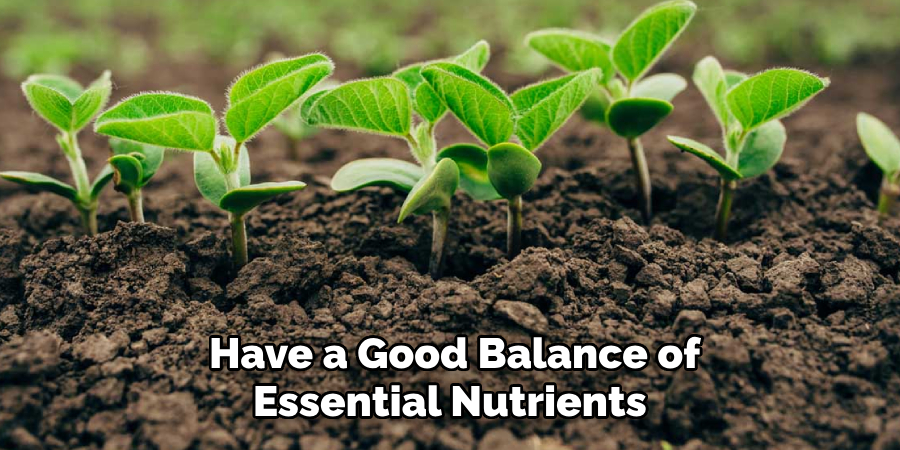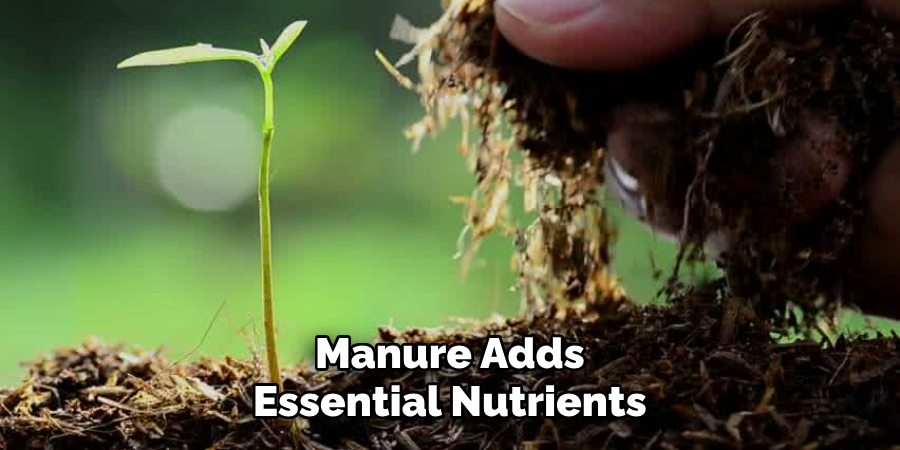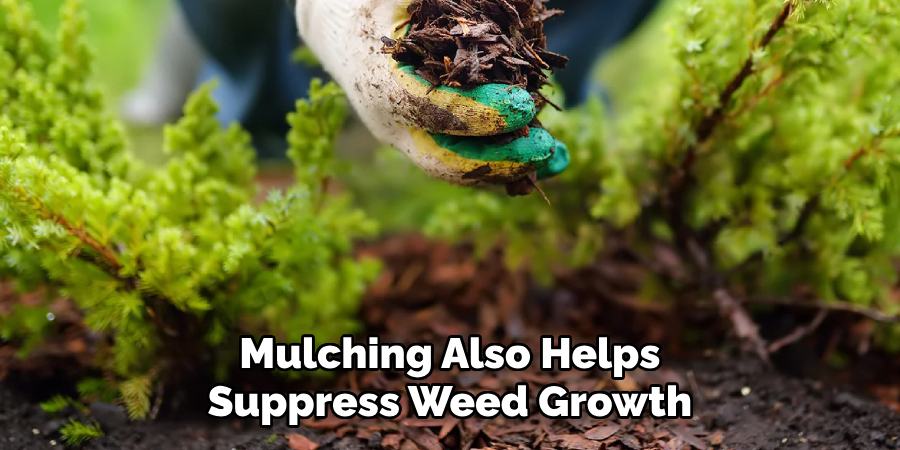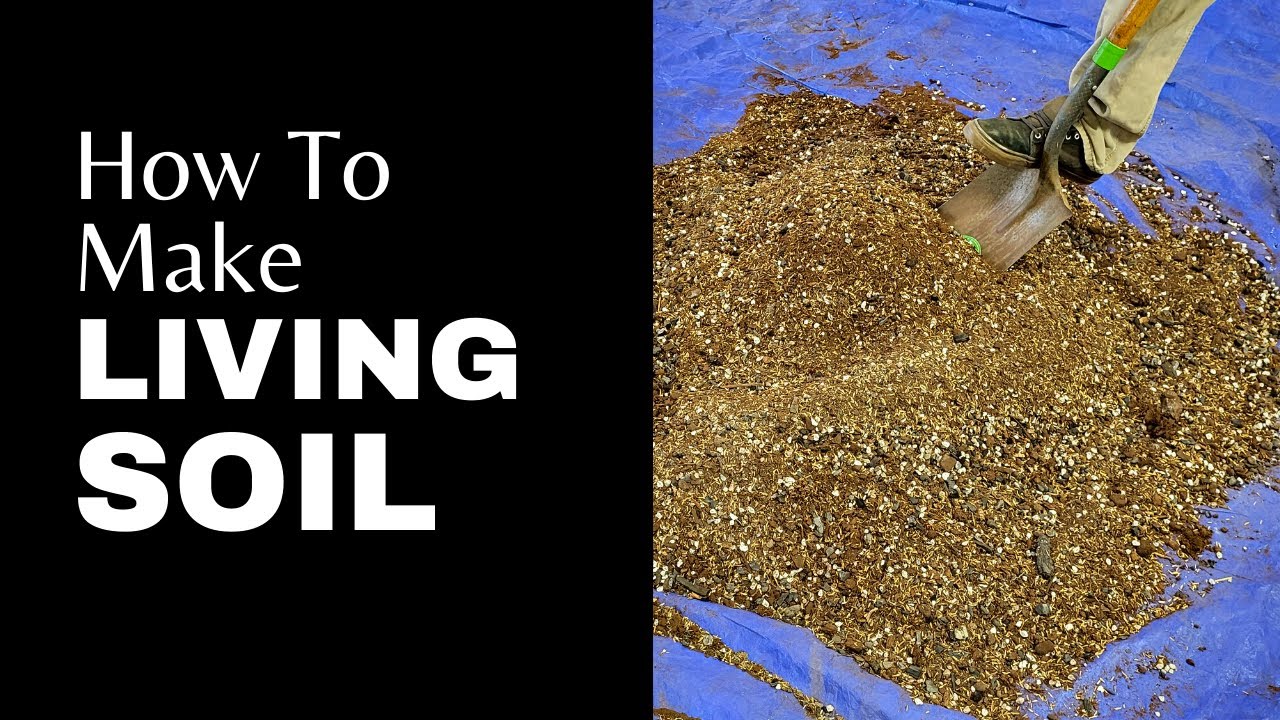To make living soil, mix together organic matter like compost, peat moss, and vermicompost with equal parts of garden soil. Introduce beneficial microorganisms and fungi to the soil for optimal health and fertility.
Living soil promotes sustainable gardening and healthy plant growth. Introducing living soil in your garden is a simple and effective way to nurture your plants and promote sustainable gardening practices. By creating a healthy soil ecosystem, you can provide a rich and fertile environment for your plants to thrive.
Living soil is teeming with beneficial microorganisms and fungi that break down organic matter, releasing important nutrients for your plants. By incorporating organic matter such as compost, peat moss, and vermicompost into your garden soil, you can ensure a balanced and nutrient-rich environment. We will explore the steps to making living soil and the benefits it offers to your garden. Let’s dive in!

Credit: dutch-passion.com
What Is Living Soil?
Living soil refers to soil that is teeming with microorganisms, earthworms, and other beneficial organisms. It is alive with activity and nutrients, creating a thriving environment for plants. This type of soil is essential for healthy plants as it provides a balanced ecosystem for roots to grow and absorb nutrients.
The definition of living soil encompasses its ability to sustain the natural cycle of nutrients, moisture, and microorganisms. The importance of living soil in gardening cannot be overstated. It promotes root development, improves nutrient uptake, and enhances the overall health of plants.
Using living soil in gardening offers numerous benefits, such as increased yield, improved plant resilience, and reduced need for synthetic fertilizers. By nourishing the soil, we can ensure the long-term health and productivity of our gardens and contribute to a sustainable ecosystem.
Components Of Living Soil
Living soil is essential for a thriving garden. The components of living soil include organic matter, microorganisms, nutrients, and water. Organic matter provides the necessary nutrients and structure for plants to grow. Microorganisms, such as bacteria and fungi, break down organic matter into nutrients that can be absorbed by plants.
These microorganisms also help in maintaining soil health. The presence of nutrients is crucial for plant growth and development. It is important to have a good balance of essential nutrients like nitrogen, phosphorus, and potassium. Lastly, water is essential for plants to uptake nutrients and maintain their moisture levels.

By ensuring that these components are present in the soil, you can create a healthy and vibrant ecosystem for your plants. Happy gardening!
Creating A Living Soil Environment
Creating a living soil environment involves mimicking the natural soil ecosystem. Start by composting and adding organic matter to enrich the soil. Incorporate beneficial microorganisms to enhance soil health and promote plant growth. Ensure a balance of nutrients and ph levels to optimize soil fertility.
By following these steps, you can make living soil that supports healthy plant growth and sustains a thriving ecosystem.
How to Make Living Soil: Step by Step Guide
Step 1: Choosing The Right Base
Choosing the right base for making living soil is crucial for its overall quality. There are various types of base materials that can be used, each with its own characteristics. Good base materials should have adequate drainage to prevent waterlogging, retain moisture to ensure the plants have enough water, and provide a balanced nutrient profile.
Additionally, the base materials should be free from contaminants and easily accessible for the root systems of the plants. Commonly used base materials include compost, peat moss, coco coir, and vermiculite. Compost is rich in organic matter and provides essential nutrients, while peat moss improves water retention.
Coco coir is a sustainable alternative to peat moss and has good drainage properties, while vermiculite improves aeration and nutrient availability. By selecting the right base material, you can create a fertile and nutrient-rich living soil for your plants.
Step 2: Adding Organic Matter
Adding organic matter to your soil is crucial for creating living soil. Organic matter is important because it improves soil structure and fertility. There are different types of organic matter that you can add, such as compost, manure, and cover crops.
Compost is a great option as it provides nutrients and helps retain moisture in the soil. Manure adds essential nutrients and improves soil structure. Cover crops like legumes fix nitrogen in the soil and prevent erosion. There are various methods to incorporate organic matter into your soil.

You can mix it in with existing soil, create compost piles to decompose organic matter, or use cover crops as green manure. By adding organic matter to your soil, you create an environment that supports beneficial microorganisms and promotes overall soil health.
Step 3: Enhancing Microbial Activity
Living soil can be enhanced by increasing microbial activity. Microorganisms play a vital role in the soil ecosystem. Introducing beneficial microorganisms is one way to enhance microbial activity. It helps in building a diverse and robust microbial community. Methods to introduce these microorganisms include using compost, vermicompost, and compost teas.
These organic amendments are rich in beneficial bacteria, fungi, and other microorganisms. Moreover, adding cover crops and mulches can also enhance microbial diversity in the soil. Creating a favorable environment for these microorganisms allows them to thrive and perform essential functions, such as nutrient cycling and disease suppression.
By enhancing microbial activity, we can ensure that our soil remains healthy and productive for plant growth. So, it is crucial to understand the importance of microorganisms in creating and maintaining living soil.
Step 4: Balancing Nutrients And Ph
Balancing nutrients and ph levels is crucial when it comes to making living soil. Testing the soil’s ph and nutrient levels is the first step in achieving this balance. By analyzing these factors, adjustments can be made to ensure the soil has the right amount of nutrients and ph.
This is important because an imbalance can lead to poor plant growth and nutrient deficiencies. By carefully testing and adjusting nutrient levels and ph, you can create a healthy environment for your plants to thrive. Remember to monitor the soil regularly to maintain the optimal nutrient balance and ph for your plants’ needs.
With a balanced soil, you can expect to see healthier and more vigorous plant growth in your garden.
Step 5: Maintaining Moisture Levels
Maintaining moisture levels in living soil is essential for its productivity. Proper watering techniques play a crucial role in achieving this. One effective method is mulching, which helps retain moisture and prevent evaporation. By layering organic materials such as straw or wood chips on the soil surface, you can create a barrier that keeps the soil moist for longer periods.
Additionally, mulching also helps suppress weed growth and improves soil structure. However, it’s important to avoid excessive mulching, as it can lead to waterlogging and hinder proper air circulation. Waterlogging occurs when the soil becomes oversaturated with water, suffocating plant roots and causing root rot.

To prevent this, ensure that the soil has good drainage and avoid overwatering. By following these techniques, you can maintain optimal moisture levels and foster a thriving living soil environment.
Regular Monitoring And Maintenance
Regular monitoring and maintenance of soil health is crucial for creating and maintaining optimal living soil conditions. By monitoring the soil regularly, gardeners and farmers can identify any signs of imbalances or deficiencies that may hinder the growth of plants.
Through this process, they can intervene promptly and take measures to restore the soil’s health. Techniques such as soil testing, ph balancing, and nutrient supplementation can help maintain the soil’s fertility and ensure that it provides the necessary environment for beneficial organisms.
Additionally, regular monitoring allows for adjustments to be made based on the specific needs of the plants being grown. With proper maintenance, living soil can be cultivated to support thriving plant life and promote sustainable agriculture practices.
Utilizing Cover Crops
Cover crops offer numerous benefits when it comes to creating and maintaining living soil. They help to improve soil structure, prevent erosion, and enhance nutrient retention. Additionally, cover crops can effectively suppress weeds and reduce the need for herbicides in gardening.
There are various types of cover crops available, including legumes, grasses, and brassicas, each offering unique advantages. Whether sowing them as green manure or using them as a living mulch, cover crops can be easily incorporated into your gardening routine.
These crops not only add organic matter to the soil but also facilitate nitrogen fixation, which enriches the soil with this essential nutrient. By using cover crops, you can create a thriving ecosystem in your garden, providing a solid foundation for healthy plants and abundant harvests.
Crop Rotation And Diversity
Crop rotation is an important practice in making living soil. Diversifying plants helps maintain soil health. Planning a proper crop rotation schedule ensures maximum benefits for the soil. By rotating crops, the nutrient levels can be balanced, pests can be controlled, and diseases can be minimized.
The inclusion of legumes in the rotation adds nitrogen to the soil, benefiting subsequent crops. Different plants have different nutrient requirements, so varying the crops promotes nutrient recycling. Additionally, diverse plants attract a wider range of beneficial insects and pollinators.
Moreover, crop rotation reduces the need for synthetic fertilizers and pesticides. In this way, crop rotation and diversity play a crucial role in creating and maintaining living soil for sustainable agriculture.
Frequently Asked Questions On How To Make Living Soil
What Is Living Soil And Why Is It Important For Gardening?
Living soil is soil that is rich in beneficial microorganisms and organic matter. It is important for gardening because it helps create a healthy environment for plants, promotes nutrient cycling, improves water retention, and reduces the need for chemical fertilizers and pesticides.
How Do I Make My Own Living Soil?
To make your own living soil, start by incorporating organic matter like compost, worm castings, and leaf mulch into your soil. Add beneficial microorganisms like mycorrhizal fungi and beneficial bacteria. Avoid using chemical fertilizers and pesticides, as they can harm the beneficial microorganisms in the soil.
What Are The Benefits Of Using Living Soil In Gardening?
Using living soil in gardening has several benefits. It improves soil fertility, enhances plant growth, increases nutrient availability, promotes natural pest and disease resistance, improves water retention, and reduces the need for synthetic fertilizers and pesticides.
Can I Use Living Soil For Indoor Gardening?
Yes, you can use living soil for indoor gardening. It is especially beneficial for indoor plants as it provides a nutrient-rich environment that promotes healthy growth. Make sure to adjust your watering and fertilization practices accordingly, as indoor plants may have different needs compared to outdoor plants.
How Often Do I Need To Amend Living Soil?
Living soil requires regular amendments to maintain its fertility and microbial activity. It is recommended to amend the soil at least once a year, preferably in the spring or fall. The frequency of amendments may vary depending on the specific requirements of your plants and the condition of your soil.
Regular monitoring and observation will help determine the timing and quantity of amendments needed.
Conclusion
Creating and maintaining a living soil can revolutionize your gardening experience. By using natural and sustainable techniques, you can cultivate a thriving ecosystem in your garden. Through the incorporation of organic matter, beneficial microorganisms, and proper watering techniques, you can create a soil teeming with life that promotes healthy plant growth.
This living soil will not only provide the necessary nutrients for your plants but also improve soil structure, water retention, and pest resistance. By embracing this holistic approach to gardening, you are not only benefiting your plants but also the environment.
Through the use of composting and organic fertilizers, you can reduce waste and decrease your dependence on harmful chemicals. As you continue to foster a living soil, you will witness the remarkable transformation in your garden, with lush plants, vibrant blooms, and abundant harvests.
So, don’t hesitate to implement these strategies and unlock the true potential of your garden.

